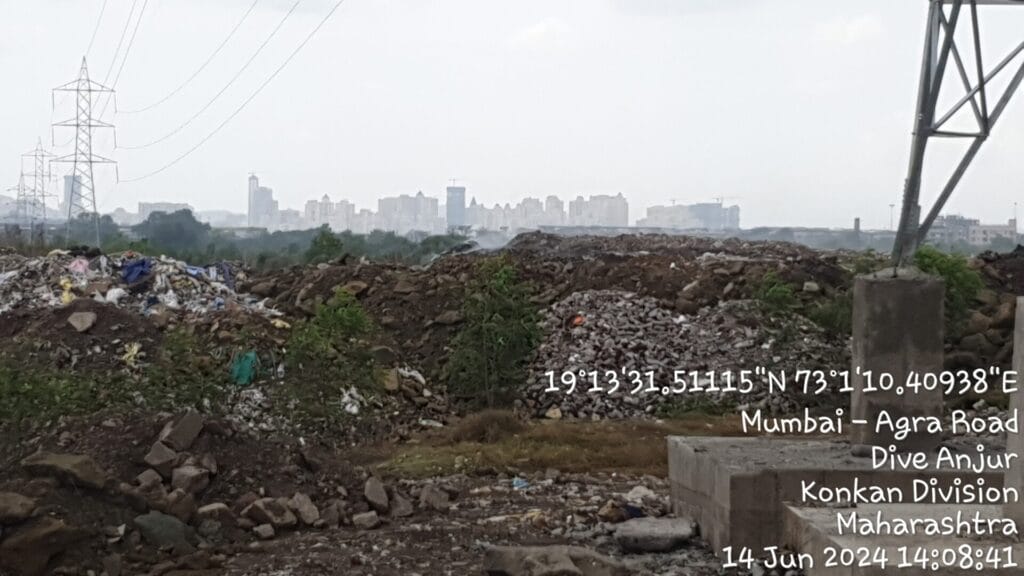We are standing ankle-deep in muck mixed with construction debris on the banks of the Ulhas River on a grey, cloudy day with rain lashing down. I am with Vicky Patil of the environmental NGO Vanashakti. Mounds of construction waste surround us. This is a Coastal Regulation I Zone (CRZ I).
Vicky explains that Vanashakti filed a complaint with the Maharashtra Pollution Control Board (MPCB) about dumping debris in a CRZ I zone and even visited the site with them. During the visit, a local informed them that the waste was coming from the Thane Municipal Corporation (TMC), which was directly dumping it there instead of sending it to the waste management centre at Daighar. When Vanashakti questioned TMC about this, they were told that no permission had been granted for debris dumping at that site.
Read more: Mumbai, here is what happens to the garbage you throw out
Mumbai: One big construction site
According to this news report, Mumbai had 11,125 active construction sites in 2023. Since, many buildings were constructed between 1960 and 1980, they need repairs or are being razed for redevelopment. In fact, it is expected that 25,000 societies will be up for redevelopment soon. Other than this, there are numerous infrastructure projects underway in Mumbai such as several metro lines, the Goregaon-Mulund Link Road (GMLR), and the coastal road.

Consequently, a huge amount of construction debris is being generated with no proper arrangement to handle it. It gets thrown on the sides of roads, or even dumped into environmentally sensitive zones.
Read more: Is recycling the answer to Mumbai’s solid waste management woes?
Construction debris: Causes and solutions
Citizen Matters did a deep dive into this issue in this video story, speaking to all the stakeholders, including builders, environmental activists, and BMC officials. We tried to understand the gaps in the management of construction and demolition debris, the steps required to tackle the issue, and what is being done about it.
As this phase is likely to continue for several years, it is pertinent that measures to tackle construction debris are identified and implemented on an urgent basis.